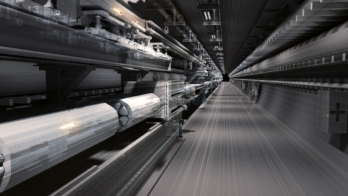John Womersley explains the changes taking place in the UK’s support structure for nuclear and particle physics and the operation of large science facilities.

Regular readers of CERN Courier will be familiar with the Particle Physics and Astronomy Research Council (PPARC) which has supported the UK’s research in particle physics for the past decade. Now it is time to say goodbye (and thanks) to PPARC, and to welcome its successor, the Science and Technology Facilities Council (STFC). The new council will be formed by merging PPARC with the Council for the Central Laboratory of the Research Councils, which operates the Rutherford Appleton Laboratory (RAL) and Daresbury Laboratory in the UK.
These laboratories have long been a key component in the UK’s particle-physics programme, particularly through their capabilities in engineering and instrumentation. “Rutherford cable” is well known in superconducting magnets worldwide. For the LHC, RAL has taken on important roles in engineering for the ATLAS endcap toroids, and in constructing the ATLAS silicon tracker and the CMS endcap calorimetry in conjunction with UK universities. Daresbury Laboratory hosts a strong accelerator group who have, among other things, assumed major responsibilities within the International Linear Collider global design effort.
Responsibility for nuclear physics will also transfer to STFC, so the new research council will combine support for particle physics, nuclear physics and astronomy with responsibility for large science facilities, such as synchrotron light sources, high-power lasers and the ISIS spallation neutron source at RAL. Overall STFC will be responsible for a budget of more than £500 million (including international subscriptions), will have about 2000 employees and more than 10,000 scientific users. The new council formally takes over on 1 April 2007 and Keith Mason, previously in charge of PPARC, will be its chief executive.
Among the motivations for the new council is a desire to create a more integrated approach within the UK to large scientific facilities, especially for long-term projects involving several countries acting together, and to deliver increased economic impact and knowledge exchange between industry, universities and the STFC’s national laboratories. We want to promote new and innovative ideas that cut across entrenched domains and benefit from cross-fertilization.
As part of this aim, new Science and Innovation Campuses have been set up at Daresbury and Harwell (adjacent to RAL) with the goal of promoting connections with industry and universities. STFC will develop a single science strategy across its programme, which will be used to inform its investment choices. Ownership of this strategy will be shared with the research communities and will involve both university and in-house expertise. As now, independent advisory and peer-review panels will guarantee that the best scientific advice is available.
Readers will likely be asking what this means for particle physics. In the short term, continuity is assured. Support for university groups and experiments will be maintained at the currently planned levels and the broad physics strategy developed over the past few years will continue. In the longer term, however, the new larger council offers the possibility to exploit new synergies and connections between particle-physics activities and other areas of STFC’s responsibility.
An interesting example is in accelerator R&D, where the technologies developed and needed for particle physics also underpin the development of new synchrotrons or free-electron light sources and of new high-power neutron-scattering facilities. Projects that develop competencies in these areas will thus benefit both particle physics machines and user facilities for the physical and life sciences. The price to be paid for having broader opportunities is, of course, that future particle-physics projects will necessarily be tensioned against a wider range of future options in STFC. Particle physicists will need to be able to make a compelling case for their aspirations in a broad forum, and I am confident that they will be able to do so.
I am pleased that the UK particle-physics community has shown support for the creation of the new council, and has focused on the opportunities that it brings. We in STFC look forward to working with the science community, both nationally and internationally, and with our colleagues at CERN and elsewhere, as part of our mission to enable world-class research and deliver access to state-of-the-art facilities.





